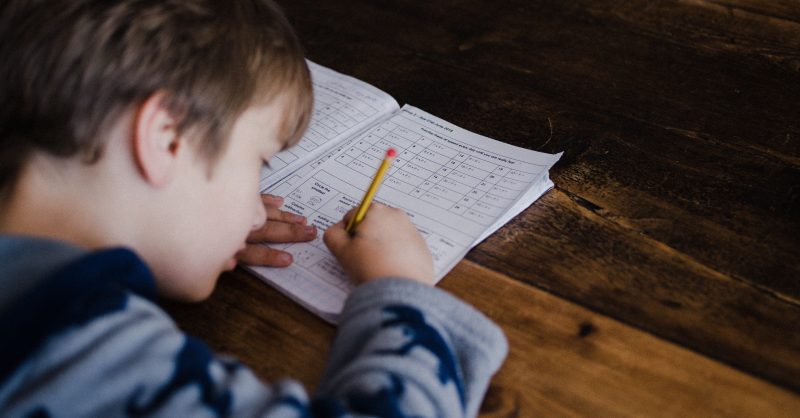
In the foundational stages of education, mathematics lays the groundwork for a lifetime of learning and problem-solving. Among the diverse tools at educators’ disposal, matching worksheets stand out as a particularly effective method for teaching young learners.
These engaging, visually appealing worksheets are designed to introduce basic mathematical concepts in a way that resonates with early learners. Teachers and parents can create their own worksheet design with tools like storyboardthat. In this article, we’ll analyse the impact of matching worksheets on early math education and how to use them effectively.
The Basics of Matching Worksheets in Mathematics
Matching worksheets are a staple in early mathematics education, serving as an interactive tool to introduce and reinforce fundamental mathematical concepts. They typically present a series of problems where students are required to draw connections or identify similarities between different elements. For young learners, these activities are not only educational but also engaging and enjoyable.
Key types of matching worksheets in early mathematics include tasks for:
- Counting: These feature arrays of objects or numbers, requiring students to match items with their corresponding counts or numerals. They are fundamental in teaching number recognition and basic counting skills.
- Shape Matching: Here, various geometric shapes are presented. Children engage in matching identical shapes or grouping them based on shared characteristics, such as the number of sides. This approach is instrumental in building spatial awareness and introducing geometry.
- Pattern Learning: Vital for developing early algebraic thinking, these worksheets display sequences of colors, shapes, or numbers. Students identify, continue, or create patterns, enhancing their ability to recognize orderly sequences and relationships.
- Simple Arithmetic: Focused on basic addition and subtraction, these tasks might involve pairing problems with their correct solutions or grouping equations with matching answers. Such activities make initial arithmetic learning both enjoyable and comprehensible.
- Color Matching: Often used to reinforce both color recognition and counting, these require children to match objects or numbers with specific colors, intertwining mathematical learning with color identification.
The design of these worksheets often includes vibrant visual elements and characters, capturing young minds’ attention and aiding in memory retention. Interactive components like cut-and-paste tasks or draw-the-line activities help maintain student engagement and refine fine motor skills.
Impact on Learning Basic Mathematical Concepts
Matching worksheets wield a significant impact on the acquisition of basic mathematical concepts among young learners. Their structured yet playful format makes abstract ideas more accessible and easier to grasp for children.
- Counting Skills: Through counting worksheets, children develop a fundamental understanding of numbers and quantities. These activities help in recognizing numerals, understanding the concept of quantity, and developing the skill of counting objects. This early engagement with numbers lays the groundwork for all future mathematical learning.
- Shape Recognition: Shape-matching tasks introduce children to the world of geometry. By identifying and grouping similar shapes, young learners become familiar with basic geometric figures. This not only aids in spatial reasoning but also in recognizing patterns and symmetries in their environment, which are essential skills in developing mathematical thinking.
- Pattern Identification: Pattern worksheets are critical in fostering early analytical skills. By identifying and creating patterns, children learn to predict sequences and understand the concept of order. This skill is foundational for later mathematical concepts, particularly in algebra, where pattern recognition plays a pivotal role.
- Simple Arithmetic: Worksheets focusing on basic arithmetic operations like addition and subtraction teach children to associate numbers with quantities and understand basic mathematical operations. This early exposure to arithmetic encourages mental calculation skills and a deeper understanding of how numbers interact with each other.
Development of Critical Thinking and Problem-Solving Skills
Matching worksheets play a pivotal role in developing critical thinking and problem-solving skills in young learners. These skills are essential not just in mathematics but in everyday life, shaping a child’s ability to analyze situations and make informed decisions.
Firstly, these worksheets encourage analytical thinking. Children learn to observe patterns, identify relationships, and make connections between different elements. This analytical approach is fundamental in mathematics and develops a mindset geared towards problem-solving.
Furthermore, these tasks teach problem-solving in a very tangible way. Faced with a variety of problems to solve, such as finding the missing number in a sequence or determining the correct shape to complete a set, children learn to approach tasks methodically. Moreover, the interactive nature of these worksheets often presents problems in a context that children can relate to, making the learning process more engaging and effective.

Integrating Matching Worksheets in Classroom Activities
Effectively incorporating these tasks into classroom activities can significantly enhance the learning experience for young students. The tools, when used strategically, can complement and reinforce the mathematical concepts being taught.
- Daily Warm-Up Exercises: Starting the day with a matching worksheet is an excellent way to engage students’ minds and prepare them for more complex lessons. These exercises can be tailored to review previously learned concepts or introduce new ones in a fun and accessible way.
- Group Activities: Teachers can encourage collaboration by using matching exercises in small group settings. This approach not only helps students learn from each other but also fosters social skills and teamwork. For instance, students can work together to solve a series of pattern-matching challenges.
- Integration with Technology: Interactive digital worksheets can be used on tablets or computers, making learning more dynamic and appealing to tech-savvy students. This also allows for immediate feedback and adaptive learning opportunities.
- Customization for Different Learning Styles: Matching worksheets can be adapted to cater to various learning styles. For visual learners, worksheets with bright colors and graphics are beneficial. For kinesthetic learners, physical activities like cutting and pasting or drawing lines to match items can be more engaging.
- Assessment and Feedback: Worksheets can serve as an effective tool for assessment. Teachers can gauge students’ understanding of the concepts taught and provide personalized feedback based on their performance on these worksheets.
Challenges and Limitations
While matching worksheets are valuable in early mathematics education, they are not without limitations. One significant challenge is the risk of over-reliance on these tools. Worksheets alone cannot cater to all learning styles and may not fully engage every student. Additionally, they often lack the interactive and practical experiences that are crucial for deep learning.
Another concern is the potential for these worksheets to become repetitive, leading to disengagement and loss of interest among students. Educators need to balance the use of worksheets with other teaching methods, ensuring a varied and comprehensive learning experience that addresses the diverse needs of all students.
Final Thoughts
Matching worksheets in early math education are more than just paper tasks; they are gateways to foundational understanding and skill development. While they effectively introduce mathematical concepts and foster critical thinking, educators must use them judiciously in combination with other methods. Ultimately, the thoughtful integration of matching worksheets can lay a strong foundation for lifelong mathematical literacy and problem-solving
- Available Courses
- Law10
- IT & Software225
- Design28
- Training6
- Accounting & Finance Primary48
- Teaching & Academics Primary36
- Teaching22
- Quality Licence Scheme Endorsed160
- Healthcare169
- Animal care10
- Job Ready Programme52
- Charity & Non-Profit Courses28
- HR & Leadership4
- Administration & Office Skills2
- Mandatory Training36
- Regulated Courses4
- Health and Safety520
- Marketing38
- Career Bundles201
- Construction59
- Electronics31
- Hospitality28
- Health and Social Care289
- Child Psychology40
- Management423
- Business Skills292
- First Aid73
- Employability283
- Safeguarding79
- Food Hygiene116
- Personal Development1597

 Food Hygiene
Food Hygiene Health & Safety
Health & Safety Safeguarding
Safeguarding First Aid
First Aid Business Skills
Business Skills Personal Development
Personal Development